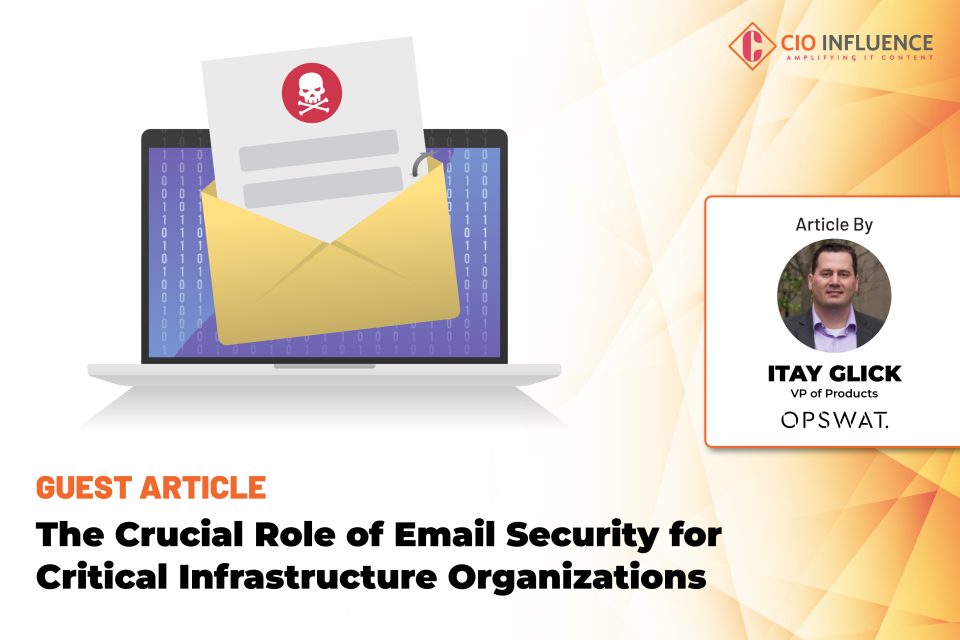In today’s rapidly evolving threat landscape, email remains the primary attack vector, particularly for critical infrastructure organizations. According to the 2024 Osterman Report, commissioned by OPSWAT, up to 75% of cybersecurity threats against these organizations arrive via email. With malicious attackers increasingly targeting critical infrastructure, ensuring comprehensive email security has never been more essential.
Also Read: An Evolutionary Approach to Artificial Intelligence
Ignorance Is Not Bliss
One of the most striking findings from the report is that more than half of the organizations surveyed operate under flawed assumptions about the nature of incoming emails and attachments. They either assume these messages are benign by default or maintain the contradictory belief that they are both benign and malicious by default. This confusion significantly undermines email security efforts and leaves organizations vulnerable.
When organizations assume that email content is benign, they typically rely on outdated security measures, such as signature-based scanning. This is problematic because attackers continuously develop new tactics that evade traditional detection methods. For instance, malicious emails often bypass initial scans by embedding harmful macros, URLs, or zero-day malware into innocuous-looking files. Once opened, these files can trigger a cascade of malicious actions, from stealing credentials to downloading ransomware. In contrast, organizations that adopt a “malicious by default” mindset are far better equipped to prevent such attacks. They employ deeper pre-delivery checks, use real-time threat intelligence, and continuously monitor email interactions, ensuring that even sophisticated threats are neutralized before they cause harm.
Email Security Breaches Are Widespread
The report’s findings make it clear that current email security measures are falling short. A staggering 80% of organizations in critical infrastructure sectors reported suffering an email-related security breach within the past 12 months. These breaches include phishing incidents, account compromises, data leakage, and ransomware infections. Phishing attacks are the most common, occurring at a rate of 5.7 incidents per 1,000 employees annually, while account compromises follow closely at 5.6 incidents per 1,000 employees.
Given the frequency of these breaches, it’s no surprise that 48% of organizations in the report expressed a lack of confidence in their current email security protections. This low confidence underscores the need for a stronger approach to email security, one that prioritizes prevention over detection and actively precludes threats from reaching users’ inboxes.
Why Email Is the Primary Attack Vector
Email is an attractive target for cybercriminals for several reasons. First, it is a ubiquitous communication tool that everyone uses, making it a natural point of entry for attackers. Additionally, email attacks can be carried out with minimal technical skill. For example, phishing scams rely more on social engineering than sophisticated coding, making them accessible to a wide range of threat actors.
Also Read: Companies See Investment in Cybersecurity Protection Software as Leading Defense Against Deepfake Attacks
Moreover, email is responsible for delivering more malware than any other method. Common file types, such as PDFs or Word documents, can be infected with malware, while embedded URLs can direct users to phishing sites or trigger downloads of additional malicious files. As IT and operational technology (OT) networks become more integrated, the potential for email-based attacks to cause significant disruption grows. In critical infrastructure sectors, where OT systems manage physical infrastructure such as energy grids or water treatment facilities, an email-based cyberattack can have catastrophic real-world consequences.
Adopting Email Security Best Practices
Given the stakes, it’s crucial for critical infrastructure organizations to adopt a comprehensive, prevention-focused email security strategy. Some best practices should include:
- Attachment-Based Security: One of the most effective ways to prevent email-based attacks is by sanitizing suspicious files and emails. Technologies such as Content Disarm and Reconstruction (CDR) remove potentially harmful components from attachments while preserving the file’s usability. Additionally, advanced real-time sandboxing can detect unknown malicious files before they reach the user’s inbox.
- URL-Based Security: Embedded URLs in emails are a common method for delivering phishing attacks and malware. Organizations should employ real-time reputation checks for URLs, ensuring that suspicious links are blocked or redirected before they can cause harm. URL analysis must continue even after email delivery, as attackers increasingly use techniques like time-bombing, where a URL is safe when first clicked but becomes malicious after a delay.
- Data Loss Prevention (DLP): Compliance with regulations such as PCI, HIPAA, and GDPR is essential for critical infrastructure organizations. To avoid costly compliance violations, organizations must implement controls that redact or block sensitive information from being sent via email. This is especially important given the risk of insider threats or careless employees unintentionally sending sensitive data.
- Phishing Protection: AI-based anti-spam engines with high detection rates and low false positives are key to protecting users from phishing and spam attacks. Organizations should replace unsafe hyperlinks in emails with links that redirect to real-time reputation checks, ensuring that employees are not exposed to malicious websites.
- Multiple Anti-Virus Engines: Using multiple anti-virus (AV) engines can significantly increase the chance of detecting malware early. The combination of signature-based detection, heuristics, and machine learning technologies enables organizations to catch emerging threats before they can cause damage.
As the report illustrates, critical infrastructure organizations face an uphill battle in securing their email channels. With 75% of cybersecurity threats arriving via email and a majority of organizations expressing a lack of confidence in their current protections, it’s clear that a dramatic shift in approach is needed.
The adoption of prevention-based strategies that treat email content as malicious by default, combined with advanced technologies like CDR and real-time URL analysis, can significantly reduce the risk of email-based cyberattacks. For critical infrastructure sectors, where the stakes are particularly high, the time to act is now. Failure to do so could result in not just data loss or financial harm, but real-world consequences that affect the safety and wellbeing of entire populations.


